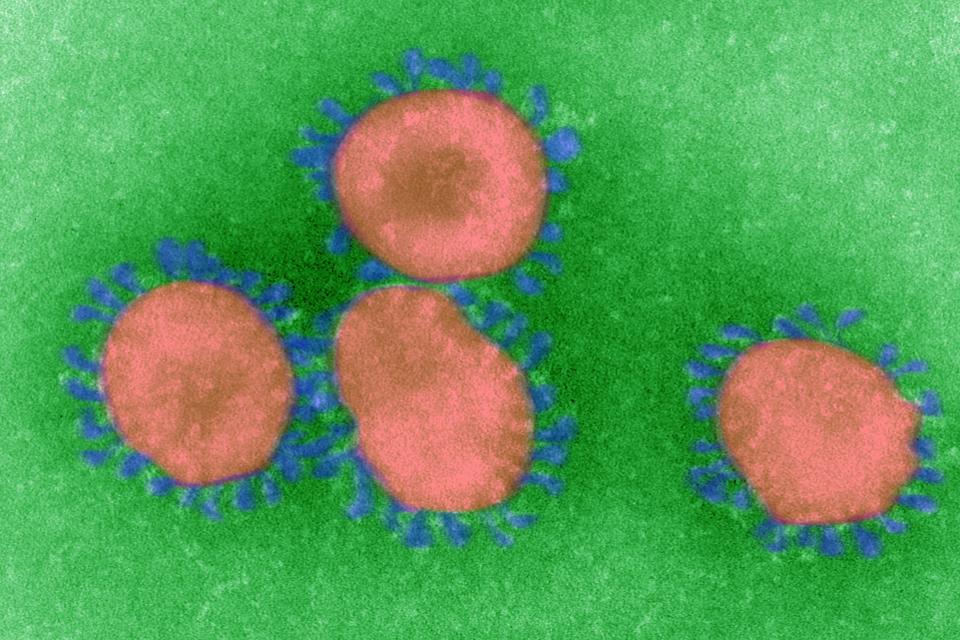Covid-19 more contagious than Sars: Why does it spread so fast?
The greatest danger of Covid-19 is its high contagiousness, which is leading to the collapse of our health system in the most affected regions. Although this virus is similar to that of Sars, it also has unique characteristics, thanks to which it spreads much faster.
The Covid-19 pandemic has spread rapidly to over 100 countries on all continents, affecting more than 300,000 people. The Sars-Cov-2 virus is from the same family as those responsible for the Sars (Severe Acute Respiratory Syndrome) and Mers (Middle East Respiratory Syndrome) epidemics in 2003 and 2012. Less lethal, much more contagious. This is a challenge for healthcare systems around the world, which are simultaneously managing many hospitalized patients who need intensive and continuous assistance. The researchers are studying the virus and have discovered which characteristics it shares with its closest relatives and which, instead, make it unique and contribute to its higher transmissibility.
More contagious than Sars
Sars-Cov-2 is a less lethal version of Sars-Cov, the virus responsible for Sars, but it spreads much faster. The Sars epidemic began in November 2002 and had affected just over 8,000 people in 29 countries in the space of 8 months, killing 774. The numbers for Covid-19 are unfortunately quite different and destined to grow in the next months. About 300,000 people have been infected in over 100 countries, and more than 13,000 have died, including 37% in Italy. This is the most serious health emergency of our time. And the major concern appears to be the high contagiousness of the new virus, which has also required particularly rigid containment measures here in Italy.
Almost identical
Still, Sars-Cov-2 shares up to 80% of its genetic makeup with the "different twin" Sars-Cov. Both viruses have the so-called Spike protein on the surface, which allows the virus to enter the host cell.
Actually, Spike proteins, or S proteins, are common to all coronaviruses, which are so called because under the microscope these proteins form small protrusions on the surface that resemble a crown. But different coronaviruses typically use different portions, or domains, of the S protein to bind a variety of receptors onto the surface of human cells.
Sars-Cov and Sars-Cov-2, on the other hand, use the same domain of protein S to interact with the same receptor, called ACE-2 (angiotensin-converting enzyme). ACE-2 is a membrane enzyme expressed mainly in the lungs but also in other organs, such as the kidneys and intestines.
Different twins
When Spike binds ACE-2, two things happen. The protein, which is formed by the two subunits S1 and S2, before binding ACE-2 is in a "closed" or inactive conformation. But immediately after interacting with the receptor, some host enzymes cut the bond between S1 and S2 and change its conformation from "closed" to "open". This transformation allows the virus to enter the cell.
The new coronavirus, however, has a particularity: its protein S contains a specific cleavage site recognized by an enzyme, furin, expressed in many human tissues and organs, such as the liver, lungs and intestines. The presence of this site, which is instead absent in the Sars virus, makes Sars-Cov-2 potentially capable of attacking many different organs at the same time. It is no coincidence that the furin cleavage site is also present in the flu virus, which has the same characteristics of high pathogenicity and transmissibility. Furthermore, recent studies have shown that Sars-Cov-2 protein S binds ACE-2 with an affinity up to 10 times greater than Sars-Cov. Also, Sars-Cov-2 replicates with great efficiency in the higher respiratory tracts, leading to tremendous viral load in throath and noses, which makes it more likely to spread among individuals.
The discovery opens the way to possible new therapeutic strategies. Covid-19 patients could benefit from treatment with furin or ACE-2 inhibitors, which can block the entry of the virus into cells. But these enzymes also have many physiological functions, and consequently any inhibitor also requires careful evaluation for any possible side effect or systemic toxicity.
Erika Salvatori
Sources: Cel



